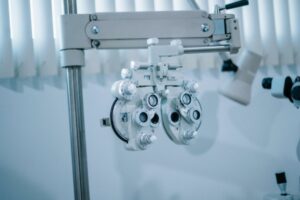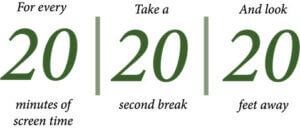Everyday Habits That Keep Your Eyes Healthy as You Age
Posted in Cataracts, Diabetic Retinopathy, Eye Blog, Mount Vernon, Sedro-Woolley, Stanwood, Whidbey

It happens so slowly you barely notice it. One day you’re squinting at the grocery receipt, and the next you’re holding your phone at arm’s length. But aging eyes aren’t a sudden failure — they’re a cumulative result of what we did, didn’t do, or never thought to do. The good news? You can start now. Daily, deliberate habits stack up. And when it comes to your vision, the margin for benefit is much wider than most people think. Sight isn’t just about genetics or fate — it’s about care, rhythm, and intention.
Understand What Time Does to Your Eyes
As the years go by, your eyes change in ways that are easy to overlook. Vision doesn’t just blur; it stiffens, tires, and dries. The lens becomes less flexible, making it harder to focus up close. Tear production slows, leaving your eyes irritated and prone to infection. Even your color perception can shift. Learning how vision changes with age helps you know what’s normal — and what isn’t. With that awareness, small adjustments become second nature instead of reactive panic.
Expand Your Network of Support

Good vision doesn’t happen in isolation. It requires expertise, timing, and regular touchpoints with care providers you trust. Whether it’s annual exams, cataract monitoring, or dry eye management, aligning with a clinic that offers integrated services makes everything simpler. When you’re choosing trusted eye care providers, prioritize continuity — not just convenience. It’s not just about having access to services. It’s about having a relationship with those services so that care feels routine, not reactive.
Tidy Your Digital Life to Ease Eye Load
You’d be surprised how much visual fatigue comes from clutter. Not just physical clutter — digital clutter. Dozens of open tabs, jumbled files, overlapping windows. Simplifying your screen experience doesn’t just help your brain — it helps your eyes. Combine scattered PDFs into one file. Archive what’s outdated. Turn your workspace into a clean field, not a battlefield. Even small actions — like using tools that streamline workflows — make a difference. If the pace of your digital life feels like a blur, this may help ease the load your eyes carry every day.
Feed Your Eyes From the Inside
You don’t need magic pills or obscure supplements. A handful of everyday nutrients can make a measurable difference in your long-term eye health. Vitamins C and E, zinc, and omega-3 fatty acids support the tissues in and around your eyes. Lutein and zeaxanthin — found in leafy greens — help filter harmful light. The science is not mystical; it’s metabolic. Understanding nutrients that support vision gives you an edge when planning meals and choosing snacks. You’re not chasing cures — you’re maintaining clarity.
Build Meals Around Ingredients That Matter

You already know carrots are good for your eyes. But there’s more — and it’s not about single foods, it’s about patterns. Salmon offers omega-3s for retina health. Eggs provide lutein and zeaxanthin. Oranges and berries deliver antioxidants that help fend off macular degeneration. These aren’t trendy superfoods — they’re regular groceries with vision-preserving effects. Once you start recognizing superfoods for eye health, it becomes easier to nudge your diet toward what your body (and your eyes) are asking for.
Be Strategic About Light Exposure
Light is life-giving, but it’s also a risk. UV rays don’t just age your skin — they accelerate cataracts and raise the risk of macular damage. And it’s not just beach days; everyday exposure adds up. Wearing sunglasses with UV protection — even on cloudy days — is a habit that pays dividends. If you spend long hours outdoors or near reflective surfaces like water or snow, you’re especially at risk. Start protecting against UV damage the same way you protect your skin — consistently, not just when it’s convenient.
Rebuild Digital Habits That Don’t Wreck Your Eyes

Screens aren’t the enemy — the way we use them is. Most of us stare too long, blink too little, and ignore the tension building behind our eyes. Even a 20-second pause can reset your strain levels. Zoom fatigue isn’t just psychological; it’s physical. A few deliberate rest beaks during screen time — looking away, blinking more, adjusting lighting — can lower your risk of dry eye and eye fatigue. It’s not about unplugging; it’s about recalibrating your rhythm.
You don’t have to overhaul your life. You don’t need a vision board or a subscription box. You need habits — not the kind that impress, but the kind that you can actually repeat. Hydrate. Adjust the blinds. Choose spinach instead of fries. Put your glasses on before you squint. Make the call for the checkup you’ve been postponing. What your eyes need most isn’t your guilt — it’s your quiet consistency. And the sooner you start, the longer you’ll see the difference.
By guest blogger, Scott Sanders, cancerwell.org
Contact Cascadia Eye
If you would like to learn more, or if you would like to schedule an appointment or consultation with our talented doctors at Cascadia Eye, please contact us today. Our entire team is committed to protecting and improving your vision and the health of your eyes. We are happy to answer any questions you might have!
In addition, join us on Facebook, Instagram or YouTube to ask your questions about eyes, exams, and our practice. We’d love to hear from you – and there might be a blog to address your questions in the future.


